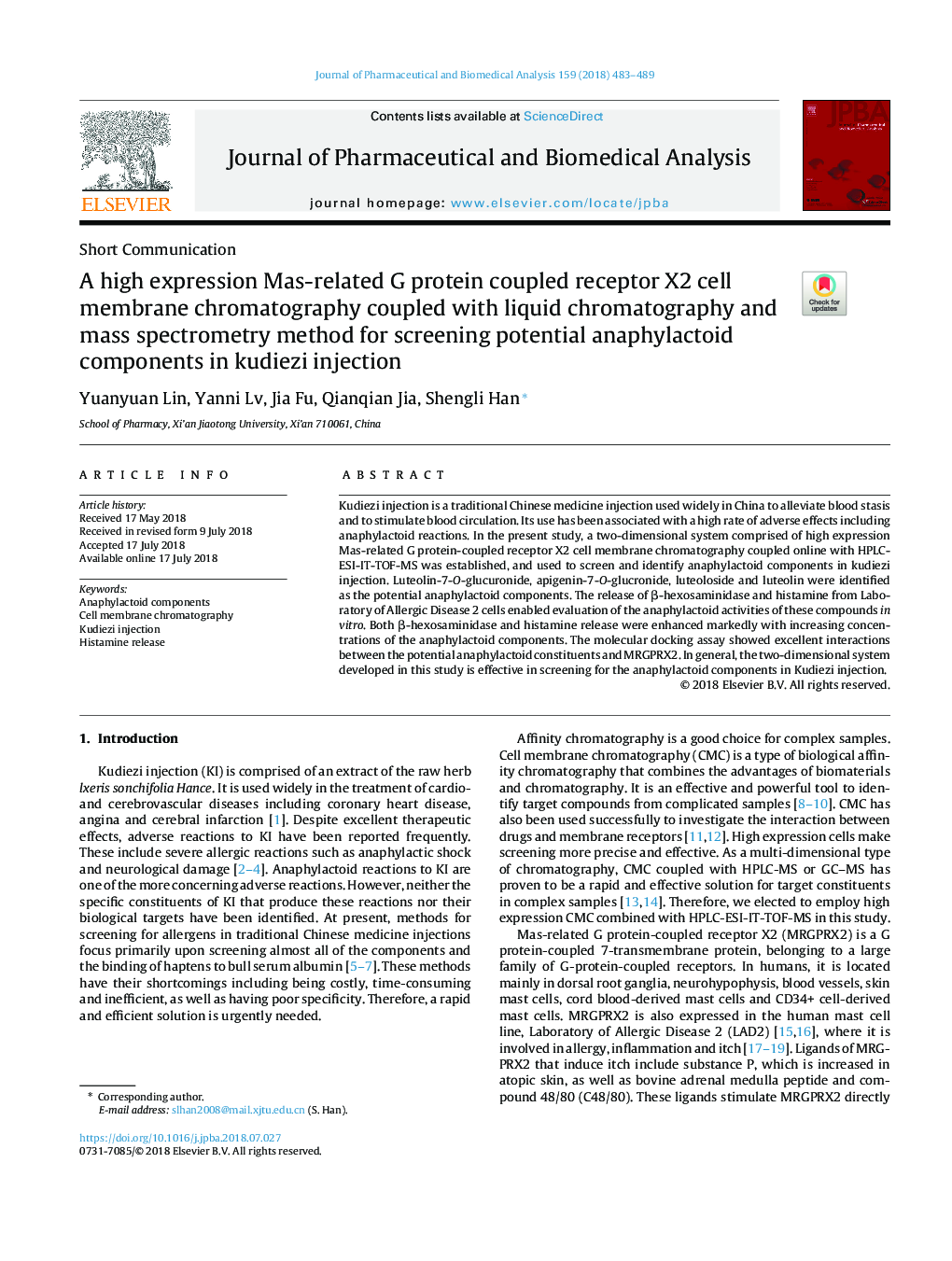| Article ID | Journal | Published Year | Pages | File Type |
|---|---|---|---|---|
| 7626142 | Journal of Pharmaceutical and Biomedical Analysis | 2018 | 7 Pages |
Abstract
Kudiezi injection is a traditional Chinese medicine injection used widely in China to alleviate blood stasis and to stimulate blood circulation. Its use has been associated with a high rate of adverse effects including anaphylactoid reactions. In the present study, a two-dimensional system comprised of high expression Mas-related G protein-coupled receptor X2 cell membrane chromatography coupled online with HPLC-ESI-IT-TOF-MS was established, and used to screen and identify anaphylactoid components in kudiezi injection. Luteolin-7-O-glucuronide, apigenin-7-O-glucronide, luteoloside and luteolin were identified as the potential anaphylactoid components. The release of β-hexosaminidase and histamine from Laboratory of Allergic Disease 2 cells enabled evaluation of the anaphylactoid activities of these compounds in vitro. Both β-hexosaminidase and histamine release were enhanced markedly with increasing concentrations of the anaphylactoid components. The molecular docking assay showed excellent interactions between the potential anaphylactoid constituents and MRGPRX2. In general, the two-dimensional system developed in this study is effective in screening for the anaphylactoid components in Kudiezi injection.
Related Topics
Physical Sciences and Engineering
Chemistry
Analytical Chemistry
Authors
Yuanyuan Lin, Yanni Lv, Jia Fu, Qianqian Jia, Shengli Han,
